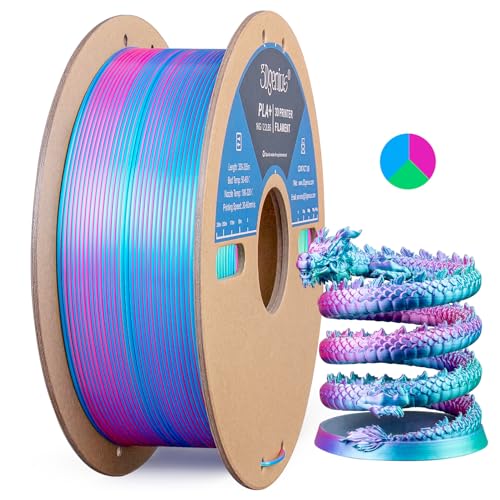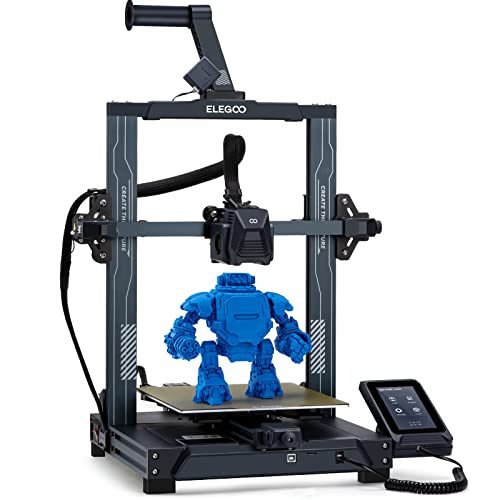When diving into the world of 3D printing, one of the first things you'll notice is the variety of 3D printer filament out there. It can feel a bit overwhelming at first, but understanding the different types will help you choose the right one for your projects. From sturdy materials to flexible options, knowing what each type offers is key.
PLA (Polylactic Acid) is one of the most popular choices, especially for beginners. It’s super easy to use, doesn't require a heated bed, and comes in a rainbow of colors. Plus, it's biodegradable, which is a nice touch if you're eco-conscious! On the downside, it’s not the strongest material, so it’s better for decorative items rather than functional parts.
ABS (Acrylonitrile Butadiene Styrene) is another common filament type. It’s tougher than PLA and can handle higher temperatures, making it a go-to for functional parts. Just keep in mind that it can emit some fumes during printing, so a well-ventilated space is a must. If you need something that can take a beating, ABS might be your best bet.
Don’t forget about PETG (Polyethylene Terephthalate Glycol). This filament combines the best of both worlds: it’s strong, flexible, and resistant to moisture. Think of it as a blend between PLA and ABS. If your project needs durability without the hassle, PETG is a smart choice.
Lastly, if you’re looking for something unique, check out specialty filaments like TPU (Thermoplastic Polyurethane). This one adds some cool flexibility to your prints. It's great for making phone cases or wearable items. Just remember that printing with TPU can be a bit tricky, so make sure your printer settings are spot on.
Factors to Consider When Choosing Filament
Picking the right 3D Printer Filament can feel a bit overwhelming with so many options out there. Let’s break it down into some key factors that will help you make a smart choice.
First up, think about the type of projects you plan to tackle. Are you working on functional prototypes, art pieces, or maybe detailed miniatures? Some filaments, like PLA, are great for general use and easy to work with, while others, like ABS, are better for robust items. Understanding your project needs will guide your filament decision.
Next, consider the filament's properties. Does it need to be flexible, durable, or heat-resistant? For example, TPU is a flexible option, while ASA is fantastic for outdoor use because it's UV resistant. Make sure to choose a filament that matches your project requirements to avoid any headaches.
Don't forget about the color and finish! 3D Printer Filament comes in a rainbow of colors, including metallics and transparents. This can really make your projects pop! Think about the look you want to achieve and select a filament that aligns with your vision.
Lastly, don’t overlook your budget. Filament prices can vary widely, so keep an eye on your costs while choosing high-quality options. Sometimes, spending a little more on a good brand can save you money later on by reducing failures and making your printing smoother.
FLASHFORGE PETG Pro 1.75mm Color-Changing Filament
Experience vibrant colors that shift as your creations come to life with this high-quality color-changing filament
Product information
€31.26
Product Review Score
4.53 out of 5 stars
125 reviewsProduct links
Tips for Getting the Best Results
Getting the best results with your 3D printer starts with choosing the right 3D printer filament. It’s not just about picking a pretty color; you’ve got to consider the material's properties too. Here are some tips to help you nail that choice every time!
First off, think about what you'll be printing. For functional parts, you might want to go with something like PLA or ABS. PLA is super user-friendly and great for beginners. It’s biodegradable and comes in a ton of colors. ABS, on the other hand, is more robust and can handle heat better, but it does require a heated bed and proper ventilation.
Next, don’t forget to check the recommended settings for your 3D printer filament. Each type of filament has its sweet spot for temperature and speed. A good rule of thumb is to start with the manufacturer's guidelines. This can save you a lot of time and frustration when things go sideways!
Lastly, keep your filament stored properly. 3D printer filament can absorb moisture from the air, which can lead to bad prints. Make sure to keep it in a dry place, possibly in a sealed bag with some desiccant. This little step can make a huge difference in print quality!
3-in-1 Triple Color Silk PLA 3D Printer Filament
Enhance your 3D prints with our versatile and vibrant Triple Color Silk PLA 3D printer filament
Product information
€22.57 €21.44
Product Review Score
4.19 out of 5 stars
154 reviewsProduct links
Where to Buy Quality Filament Supplies
When it comes to finding quality 3D Printer Filament, shopping smart makes all the difference. You don’t want to waste your time or money on subpar supplies that can mess up your prints. Here are some trustworthy places you can check out.
Online retailers like Amazon and eBay often have a wide variety of 3D Printer Filament options. You can easily read reviews from other buyers and compare prices. Look for sellers with high ratings and detailed descriptions. This way, you can choose the best material for your specific printer and projects without any guesswork.
If you prefer to see products in person, local electronics or hobby shops can be great. They often carry popular brands and sometimes offer samples so you can test before you buy. It’s also a plus to ask staff for recommendations based on your needs, which can save you a lot of trial and error down the line.
Don't overlook specialty 3D printing websites. Many brands focus specifically on 3D Printer Filament and often have exclusive materials or colors you won’t find anywhere else. This can give your projects a unique touch. Plus, they usually provide in-depth technical specifications that can really help you decide.
Whichever route you choose, always look for high-quality filaments that fit your 3D printer’s specs. Investing in good materials leads to better prints, less frustration, and a more enjoyable 3D printing experience overall.





